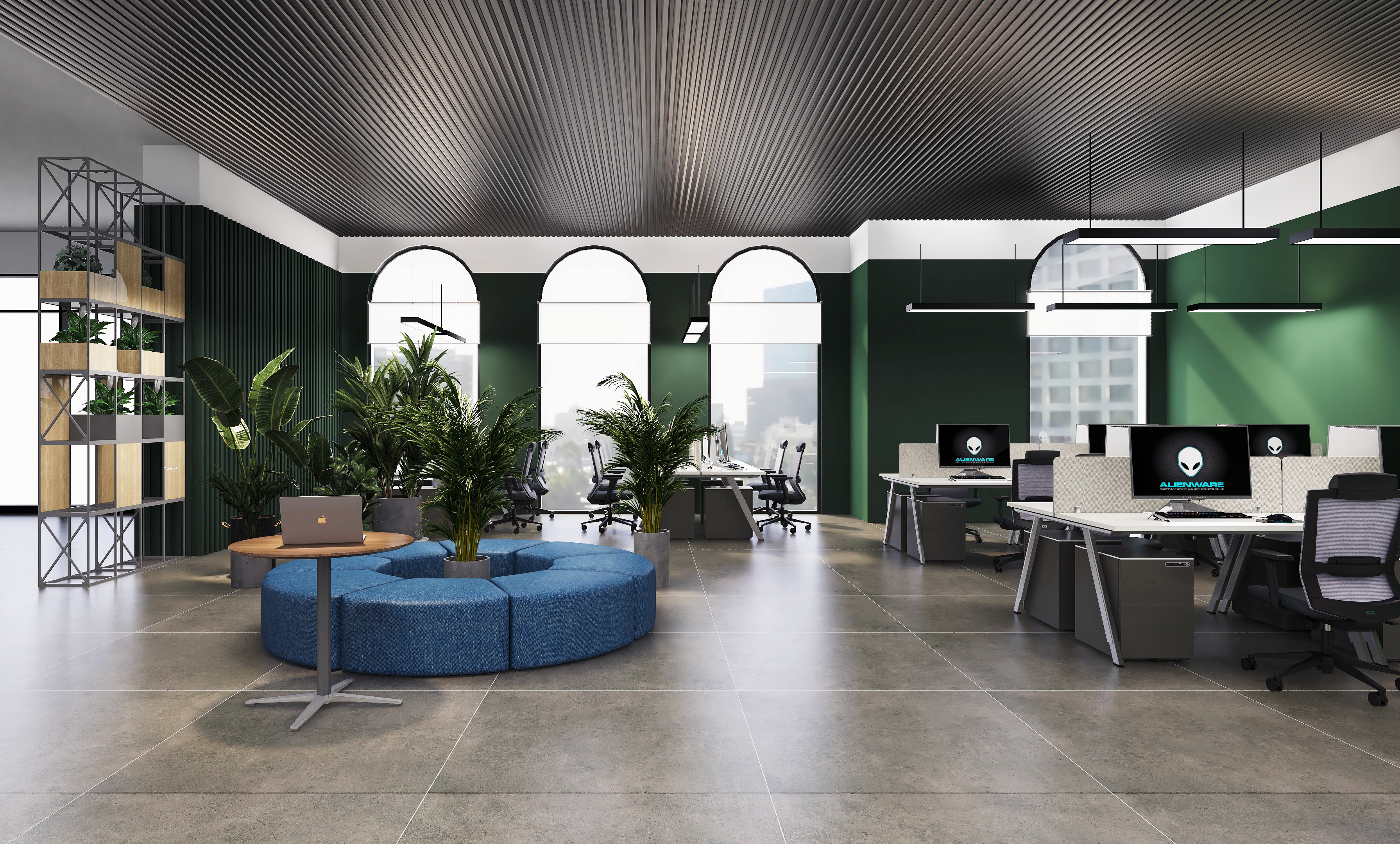
People’s work lives have changed and so have their needs and expectations at the workplace. Employees have recognized their aspirations beyond pay and perks, and work practices have to change to meet those demands. Making flashy offices to attract new talent won’t cut in anymore. People want work to be a fulfilling, human experience in and of itself. As in life, they are looking for a purpose, be a part of something meaningful, and be in forward-thinking office environments where they can do their best work.
Companies can respond to these demands by transforming their workplaces. A well-designed office that considers both utility and aesthetics may significantly improve employee satisfaction. Enhancing a positive workplace environment and encouraging creativity means higher productivity. The office space and work culture of every company say volumes about its brand value.

In this article, we are discussing 5 ideas to improve the workplace experience and the impact they have on people and business.
High trust culture
The brand and goals of a business are brought together through an all-inclusive multicultural and dynamic work culture. An office is no longer only a location for employees to work and complete duties; it's also a social atmosphere that pulls people together to work on amazing projects. Workplace experience and corporate culture are mutually dependent. Employees are more likely to not only stay with a ‘caring’ organization but also to grow with it. The amalgamation of experience with office settings and culture is the key to employee satisfaction.
The touch and feel of the space
There is nothing more experiential than a thoughtfully designed human-centric workplace. In an open plan layout, the right design and furnishings may encourage employee interactions, collaborations, and a sense of community. Ergonomic furniture, lighting, décor, biophilia, temperature, and air quality all contribute to employee wellbeing and satisfaction. An office design with functionality and aesthetics in mind can go a long way in elevating employee experience. Office as a physical space should never be rigid or constant… it should always be ready to be optimized, adjusted, and updated as things move forward.

Creativity at work
Progress through preparation, incubation, illumination, and execution are the four stages of creativity. Allowing employees to engage in concentrated play makes the stages of incubation and illumination go more efficiently. Dedicating flexible spaces for brainstorming and ideation, and encouraging employees to take risks can lead to creativity and innovation. Apple, for example, permits employees to tinker with their products to stimulate creativity. Apple's employees conduct workplace experiments with new hardware and software in order to enhance the product's design and functionality before releasing it to the public.
Employee engagement
According to research, over 75% of businesses are coping with disengaged workers. Modern firms are anxious to retain talent and promote employee engagement in this era of the "Great Resignation." Employers must push the envelope in terms of well-being, engagement, inclusivity, and communication strategies. Employees are more engaged when they feel well-cared for. Employees having high wellness practices and organizational support report higher intent to stay.

Rewarding positivity
In an office, rewards create favorable attitudes. Rewarding and recognizing employees may go a long way toward fostering a positive and joyful work environment. Some employees are motivated by monetary incentives and bonuses, while others want meaningful work, a culture of feedback, challenging work, and a trustworthy work environment. Extra vacation time, mental health days, and employee allowances, among other things, can also improve the work experience.